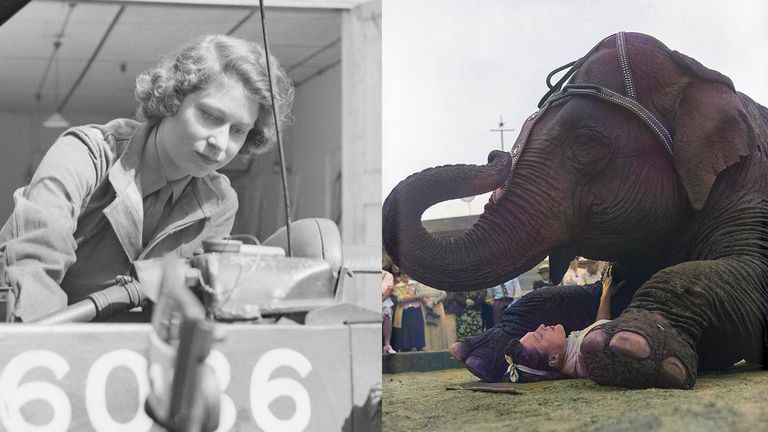Rare Photos From The 1940s Give Us An Eye-Opening Glimpse Into The Past
The 1940s was possibly one of the most tumultuous times in American history. World War II forced the U.S. to climb out of the Great Depression — but it decimated the population and left the men who returned home forever changed. On the home front, though, women flooded the workplace in greater numbers than ever before. Yet even after the war ended and everybody tried to move on, the Cold War began to heat up. These astonishing images give us a glimpse of what it must have been like to live through this historic time.
All hands to the mill
The Library of Congress revealed that the woman in this eye-catching color photo is Mary Louise Stepan. She was 21 years old and working a hand mill for the Consolidated Aircraft Corp. in Fort Worth, Texas. Mary Louise had been a waitress before taking the job, and her brother had joined the war effort for the air corps, too.
Home on the range
The 1940s is generally a period we think of in black and white — and that makes the rare color photos from this era so arresting. This one was part of the United States Farm Security Administration’s efforts to capture a snapshot of American life during the early years of the decade. The shepherd seen here was pictured on Gravelly Range in Madison County, Montana.
Fresh faces for the police
The police force was one of the many things that World War II would change forever. The labor shortage naturally forced the police to boost their ranks in ways they may not have considered before. After all, a worldwide conflict didn’t mean internal security could afford to rest on its laurels. In this picture, we can see women in New York preparing to join the force in 1940.
The home front
The United States Farm Security Administration (FSA) initially commissioned its photographers to capture how much America had changed since the Great Depression. This shot of a house in Texas was likely part of an official effort to get people to back the government’s relief plans. As the U.S. entered World War II, though, the FSA’s photographers joined the Office of War Information and began to zero in on the war effort.

